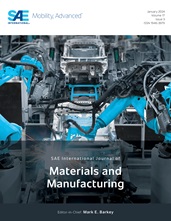Machine Learning–Based Modeling for Predicting the Lap Shear Strength of High-Strength Steel Laser Lap Welds
- Features
- Content
- This study investigates the nonlinear correlation between laser welding parameters and weld quality, employing machine learning techniques to enhance the predictive accuracy of tensile lap shear strength (TLS) in automotive QP1180 high-strength steel joints. By incorporating three algorithms: random forest (RF), backpropagation neural network (BPNN), and K-nearest neighbors regression (KNN), with Bayesian optimization (BO), an efficient predictive model has been developed. The results demonstrated that the RF model optimized by the BO algorithm performed best in predicting the strength of high-strength steel plate-welded joints, with an R2 of 0.961. Furthermore, the trained RF model was applied to identify the parameter combination for the maximum TLS value within the selected parameter range through grid search, and its effectiveness was experimentally verified. The model predictions were accurate, with errors controlled within 6.73%. The TLS obtained from the reverse-selected process parameters was superior to that from the experimental design method, validating the effectiveness of the approach.
- Pages
- 15
- Citation
- Han, J., Ji, Y., Liu, Y., Liu, Z. et al., "Machine Learning–Based Modeling for Predicting the Lap Shear Strength of High-Strength Steel Laser Lap Welds," SAE Int. J. Mater. Manf. 18(4):409-423, 2025, https://doi.org/10.4271/05-18-04-0029.
